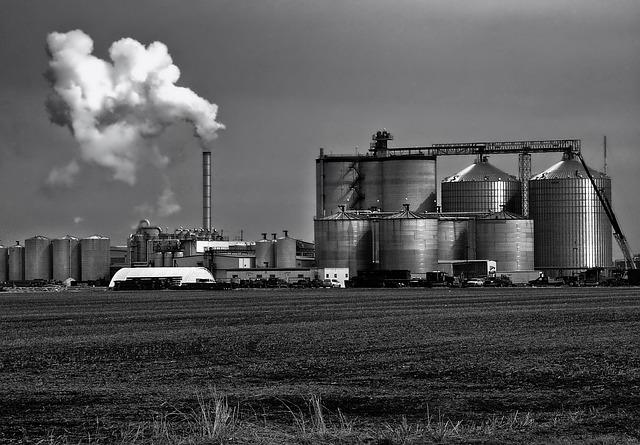In an ever-evolving landscape of agriculture and biofuels, the intersection of science and policy plays a pivotal role in shaping the future of sustainable practices. The recent call from the Renewable Fuels Association (RFA) to the U.S. Department of Agriculture (USDA) emphasizes the urgency of basing decisions on scientific evidence while strategically marketing feedstock Commodity Specific Attributes (CSA) rules. As stakeholders navigate the complexities of biofuel production and its impact on the environment and economy, the importance of aligning regulations with scientific insights cannot be overstated. This article delves into the RFA’s position, exploring how a focused, science-driven approach could enhance the effectiveness of CSA rules, ultimately benefiting the industry and the planet. Join us as we unpack the implications of this call to action and envision a more informed, market-responsive future for ethanol and biofuel production.
Understanding the Science Behind Feedstock CSA Rules
In the evolving landscape of renewable energy, particularly in the ethanol sector, understanding the underlying science of feedstock is crucial for effective rule implementation. Feedstock, which refers to the raw materials used to produce biofuels, plays a pivotal role in determining the efficiency, sustainability, and overall impact of the ethanol production process. The recent discussions around the Custom Science Approach (CSA) emphasize the need for policies grounded in scientific fundamentals rather than arbitrary limits or generalized approaches.
Central to these considerations are a few key principles that highlight the importance of scientific inquiry in shaping feedstock CSA rules:
- Quality over Quantity: The focus should be on the biochemical composition of feedstocks, as certain types may yield higher energy outputs and lower emissions.
- Regional Assessment: Local climatic and soil conditions can influence the efficacy of different feedstocks, necessitating a tailored approach that leverages regional strengths.
- Lifecycle Analysis: Comprehensive assessments of greenhouse gas emissions and environmental impact over the entire lifecycle of feedstock production and processing are essential in determining true sustainability.
Market adaptation is equally vital. By utilizing real-time data analytics and feedback loops, stakeholders can make informed decisions that align with both market demands and environmental responsibilities. As businesses integrate these insights, they can better align their strategies with evolving consumer expectations and regulatory frameworks. Adopting a science-based perspective not only supports regulatory compliance but also enhances innovation throughout the industry, leading to more robust and resilient ethanol production systems.

Navigating Market Dynamics for Enhanced Ethanol Production
In the ever-evolving landscape of ethanol production, understanding the intricate interplay between market forces and regulatory frameworks is essential for industry stakeholders. As the Renewable Fuels Association (RFA) advocates for science-based approaches, it is crucial to recognize the implications of feedstock Climate-Smart Agriculture (CSA) rules. By embracing innovative practices, producers can enhance both yield and sustainability, fundamentally transforming how we approach ethanol production. Strategies that prioritize soil health, carbon sequestration, and greenhouse gas reduction will not only align with regulatory expectations but also set the stage for long-term profitability.
To effectively navigate these market dynamics, producers should consider adopting a diversified feedstock strategy. This approach not only mitigates risks associated with supply fluctuations but also allows for greater resilience against price volatility. The incorporation of advanced technologies, such as precision agriculture and biomass optimization, can further amplify the benefits of this strategy. Key considerations for a diversified feedstock strategy include:
- Local sourcing: Engage with local farmers to secure a stable supply of feedstock.
- Crop rotation: Utilize varying crops to enhance soil health and productivity.
- Innovative partnerships: Collaborate with agricultural research institutions to access cutting-edge practices.
Additionally, understanding the competitive advantages of different feedstock types can drive strategic investments. A balanced portfolio of traditional and innovative feedstocks can help ethanol producers capitalize on emerging markets while adhering to environmental mandates. The following table outlines some common feedstock options along with their respective market potential and sustainability ratings:
| Feedstock Type | Market Potential | Sustainability Rating |
|---|---|---|
| Corn | High | Moderate |
| Switchgrass | Medium | High |
| Sorghum | Medium | Moderate |
| Waste Biomass | Growing | High |

Strategies for Effective Implementation of Regulatory Guidelines
Successful implementation of regulatory guidelines necessitates a multi-faceted approach that focuses on innovation, stakeholder engagement, and continuous evaluation. To begin with, collaboration among stakeholders—including farmers, producers, and regulatory agencies—is essential. These partnerships can help identify common goals and promote an understanding of regulatory demands. Supporting educational initiatives through workshops and training sessions ensures that everyone involved is well-versed in the guidelines and can confidently adapt their operations to meet compliance standards.
Moreover, utilizing data analytics and reporting tools can significantly enhance the monitoring and adaptation process. By leveraging technology, stakeholders can track performance metrics related to the feedstock and optimize their practices accordingly. This not only aids in adhering to the guidelines but also fosters a culture of transparency and accountability within the operations. Setting clear performance indicators and utilizing a feedback mechanism for stakeholders to provide insights on the guidelines will also help regulators adjust and refine policies based on real-world applications.
Lastly, developing a phased implementation plan allows for flexibility and adaptability in adopting new regulations. This can be organized as follows:
| Phase | Description | Timeline |
|---|---|---|
| Phase 1 | Initial stakeholder consultation and education | 0-3 months |
| Phase 2 | Implementation of monitoring tools and practices | 4-6 months |
| Phase 3 | Evaluation of effectiveness and adjustments based on feedback | 7-12 months |
Emphasizing these strategies encourages not only compliance but also fosters innovation that can lead to improved outcomes across the board. By following this structured approach, stakeholders can effectively navigate the complexities of regulatory guidelines while maximizing the benefits of the feedstock CSA rules.

Building Collaborative Partnerships for Sustainable Agriculture
In the pursuit of advancing sustainable agriculture, the establishment of comprehensive partnerships is crucial. Collaborations among farmers, scientists, agribusinesses, and policymakers can drive innovation and share best practices that enhance efficiency while minimizing environmental impacts. By leveraging diverse expertise, stakeholders can develop strategies that not only comply with but also optimize feedstock CSA rules. Such collaborative efforts can lay the groundwork for fostering ecosystems where sustainable practices are not only adopted but celebrated.
Building alliances focused on shared goals often leads to enhanced resources and innovative approaches. For instance, joint research initiatives can provide insights into the long-term benefits of regenerative agriculture. Stakeholders are encouraged to:
- Engage in knowledge sharing: Facilitate workshops and forums to disseminate research findings.
- Implement pilot programs: Test new farming techniques on a small-scale before wider adoption.
- Advocate for supportive policies: Work together to influence legislation that benefits sustainable farming practices.
Such strategic partnerships can catalyze the shift toward practices that are both economically viable and environmentally responsible.
Data-driven decision-making is a cornerstone of effective collaboration. By harnessing agronomic data and market trends, stakeholders can refine their strategies to meet consumer needs while promoting sustainability. A valuable approach is the establishment of an Agreements Table that outlines the roles and contributions of each partner. The table below illustrates potential collaborative agreements:
| Partner | Contribution | Benefit |
|---|---|---|
| Farmers | Provide on-ground insights and feedback | Improve practices based on real-world data |
| Researchers | Conduct studies on sustainable practices | Inform policy based on scientific evidence |
| Policymakers | Create supportive regulations | Enable frameworks for sustainability initiatives |
As these partnerships evolve, continuous dialogue and adaptation will be key to addressing challenges and maximizing the benefits of the feedstock CSA rules. By following the science and making informed decisions rooted in collaboration, stakeholders can create a resilient agricultural landscape that sustains both the environment and the economy.
To Conclude
the call from the Renewable Fuels Association (RFA) to the U.S. Department of Agriculture (USDA) highlights the critical need for science-driven policies that can effectively harness the potential of feedstock Climate Smart Agriculture (CSA) rules. By embracing innovative practices grounded in empirical evidence, stakeholders across the ethanol industry can not only enhance sustainability but also maximize the benefits of these evolving regulations. The path forward requires collaboration, investment in research, and a commitment to transparency, ensuring that the agricultural and renewable fuel sectors can thrive together. As the dialogue continues, it will be essential for all involved to stay attuned to scientific advancements and market dynamics, ultimately paving the way for a more sustainable and resilient future in biofuels. The journey is just beginning, and the promise of a greener tomorrow is within reach.































